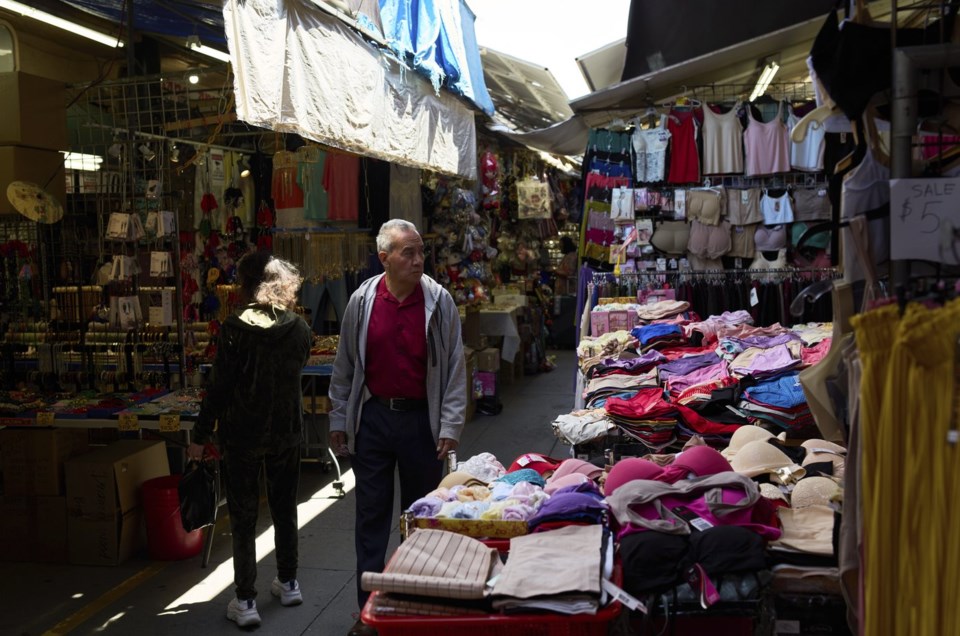WASHINGTON (AP) — A closely watched inflation gauge cooled last month in a sign that prices were steadily easing before most of President Donald Trump’s tariffs were implemented.
At the same time, consumers accelerated their spending, particularly on cars, likely in an effort to get ahead of the duties.
Wednesday’s report from the Commerce Department showed that consumer prices rose just 2.3% in March from a year earlier, down from 2.7% in February. Excluding the volatile food and energy categories, core prices rose 2.6% compared with a year ago, below February’s 3%. Economists track core prices because they typically provide a better read on where inflation is headed.
The slowdown in inflation could be a temporary respite until the widespread duties imposed by Trump begin to push up prices in many categories. Most economists expect inflation to start picking up in the coming months.
“Core inflation will inevitably rebound sharply in the coming months,” Harry Chambers, assistant economist at Capital Economics, said in an email. “Goods prices will rise much more strongly.”
Chambers expects core inflation will near 4% by late this year.
Wednesday’s report also showed that consumer spending increased 0.7% from February to March, a healthy gain. Much of the increase appeared to be driven by efforts to get ahead of duties, such as Trump's 25% duty on imported cars, which took effect April 3. Spending on autos surged 8.1% in March. Still, that means auto sales are likely to fade in the coming months because those assets have already been secured.
But spending on restaurants and hotels also jumped after falling in February, a sign Americans are still willing to splurge a little on travel and dining out.
The spending increase is noteworthy because consumer confidence surveys have plunged for several months, suggesting Americans have grown increasingly worried about the economy. Yet so far, that hasn't translated into a noticeable slowdown in spending.
Earlier Wednesday, the government reported that consumer spending slowed in the first three months of the year, compared with last year’s final quarter, as bad weather depressed shopping and Americans took a breather after healthy spending over the winter holidays.
The nation’s economy actually shrank 0.3% in the January-March quarter as imports surged as companies sought to get ahead of Trump’s tariffs.
Trump benefited in last year’s election from broad dissatisfaction among voters about the steep rise in prices that began in 2021 and that, on average, pushed prices up about 25% by the middle of last year. Grocery costs shot up nearly 30%. As a candidate, Trump said he would immediately lower prices if elected.
Yet the president has slapped 25% duties on steel and aluminum, as well as cars, and a 10% tariff on nearly all other imports. And China, the United States’ third-largest trading partner, now faces a 145% duty on its exports.
The inflation-fighters at the Federal Reserve target a 2% inflation rate and pay close attention to Wednesday’s inflation gauge, known as the personal consumption expenditures price index. The better-known consumer price index was released earlier this month and also showed a steady decline.
Inflation figures were revised higher for January and February, leaving price increases in the first quarter higher than previously estimated. The higher figures would likely leave Fed officials wary of cutting rates soon even before taking tariffs into account.
Trump has pushed the Fed to cut its key short-term interest rate because inflation has cooled. But Fed Chair Jerome Powell has underscored that the central bank is likely to remain on the sidelines as officials gauge how tariffs will impact the economy. The Fed isn’t expected to lower its rate at its policy meeting next week.
Christopher Rugaber, The Associated Press



